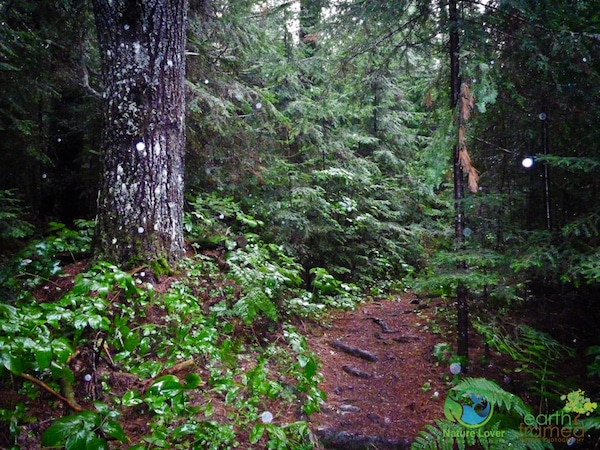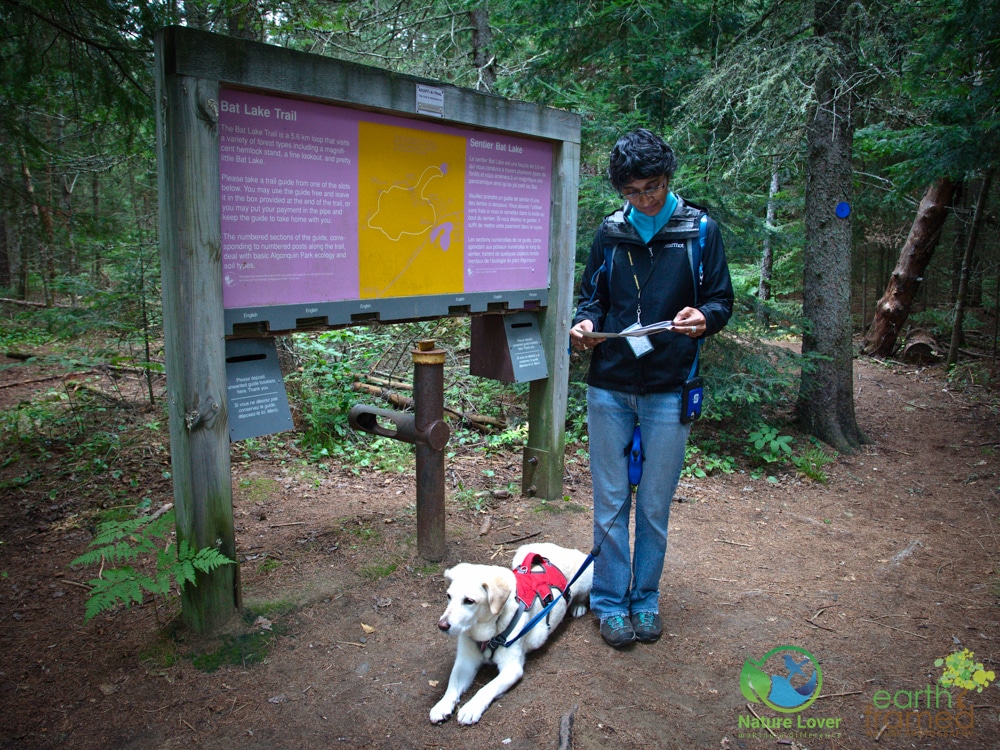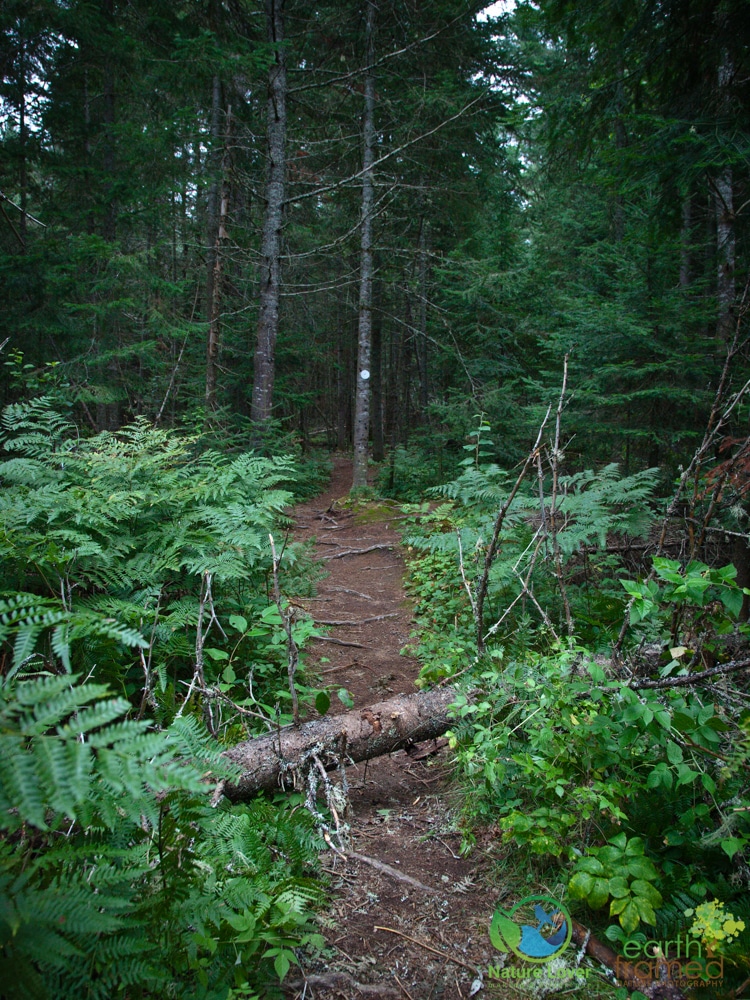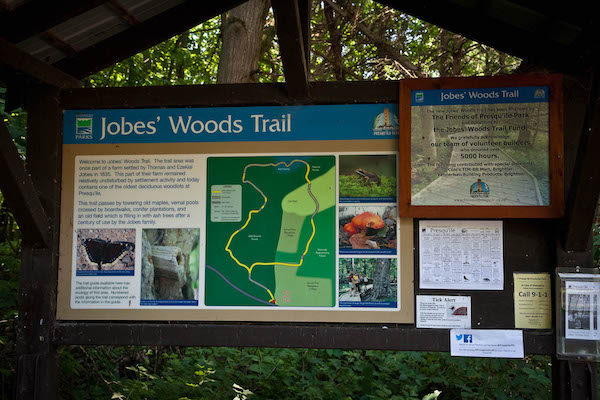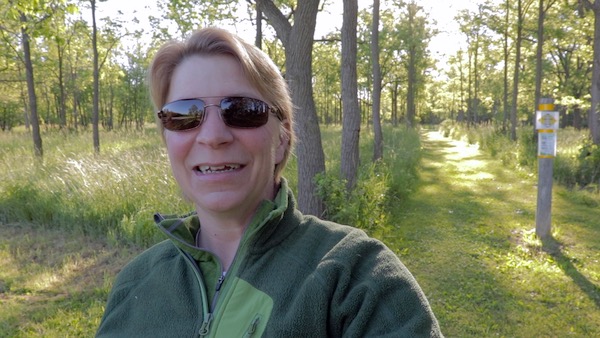Bat Lake Trail is a 5 kilometer trail that loops through Algonquin landscapes including mixed forests, a bog and a lake. The first day we tried to hike the trail it was actually quite cool, which was a pleasant change from the extreme heat just a few days before. The cool temperatures coincided with rain that came and went over several days of our stay, sometimes the rain was torrential. Since the trail was 5 kilometres, we had decided that we would hike in about 1 to 1.5 kilometre, have our lunch and then turn around and come back. The whole trail would have been too much for Maya considering her age and the amount of exercise she has been getting.
Chitra is checking out the trail brochure, which is available at the beginning of the trail, to decide in which direction we should go. We decided to go in a clockwise direction, but in retrospect it would have been better to have gone the other way. Live and learn.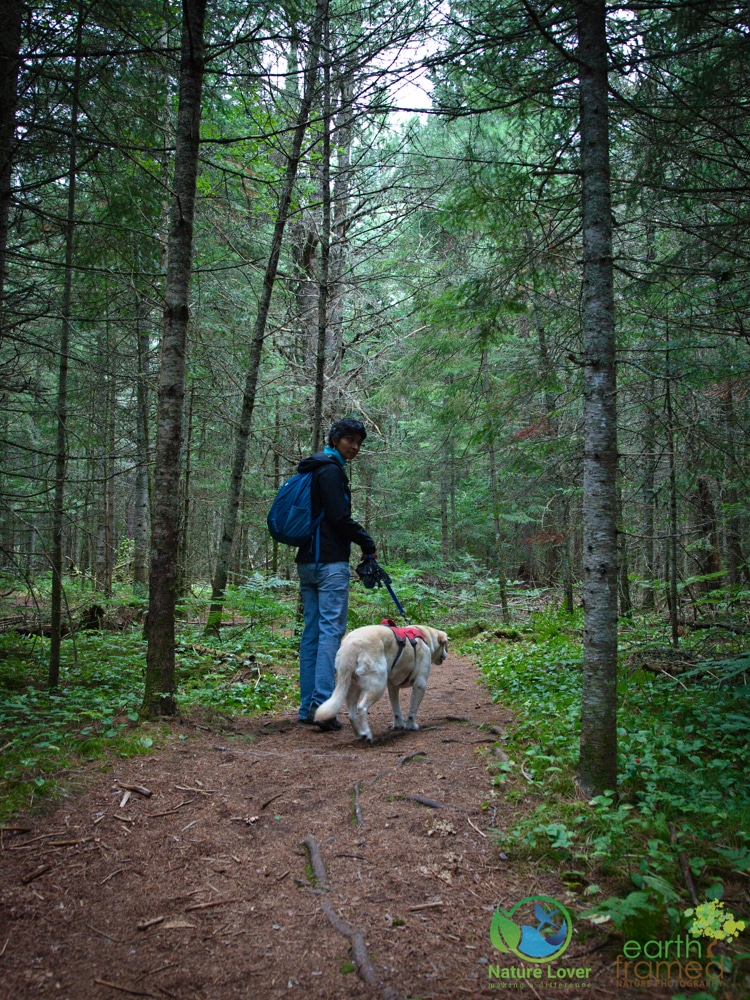
The beginning of the trail was level with roots jutting up here and there, as you would expect from a forest whose soil is no more than a metre thick. It was overcast but the rain had held out so far and the trail was fairly dry considering the amount of rain we had in the past few days.
We packed all of our rain jackets in our backpack, including Maya’s, just in case weather came in.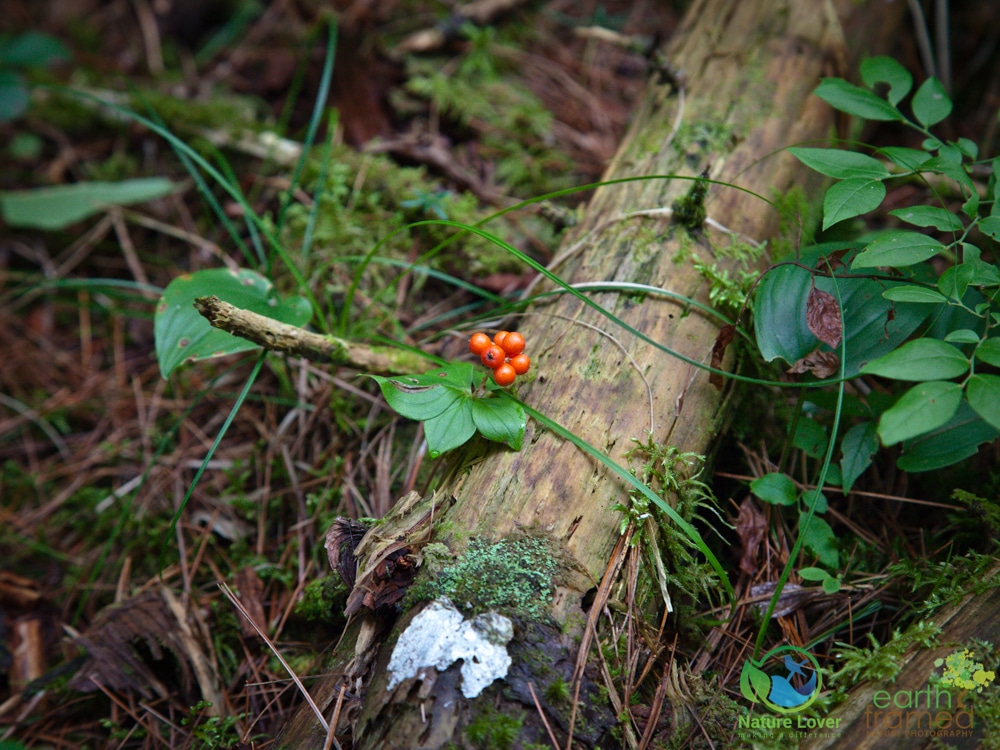
The forest floor was covered with moss, ferns and wildflowers. Above you can see the white lichen below a patch of moss on the fallen tree truck. The bunchberry plant, with it’s bright red fruit, can also be seen resting beside the log and pine needles cover the forest floor.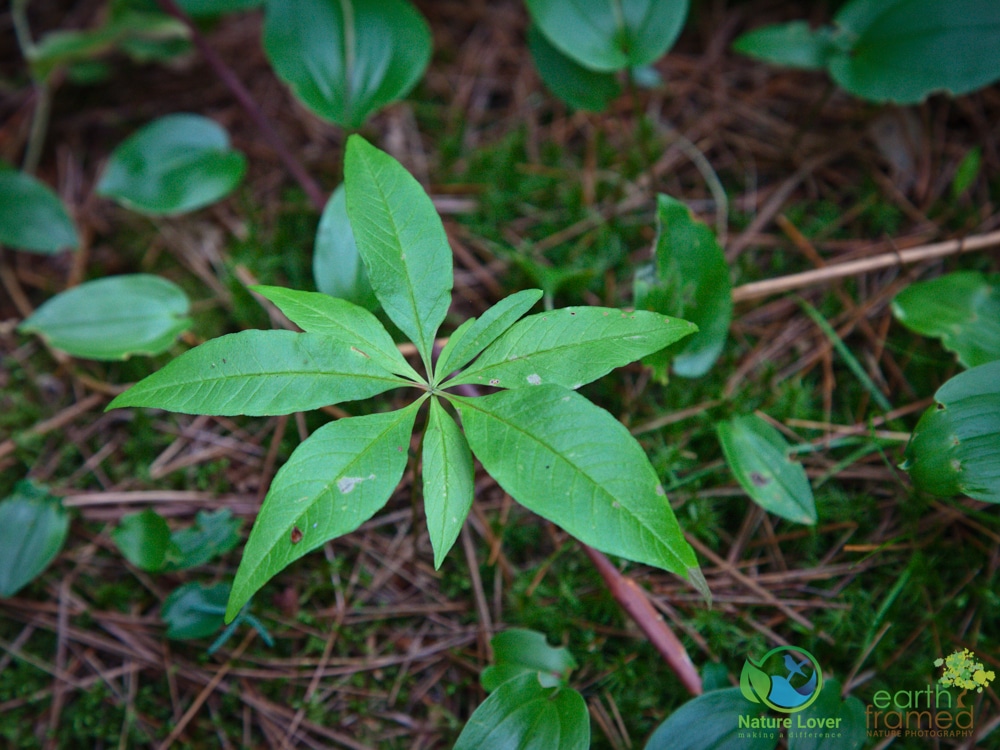
The gorgeous leaf structure belongs to the Starflower. The Starflower is a native plant that features these whorled leaves and, earlier in the season, dainty, white flowers that are only about 1/2″ in size.
There were a few obstacles over the trail that we had to help Maya over. It was simpler on the way in since the logs were dry. Maya had more difficulty once it started to rain and these logs and the roots on the ground became slip hazards.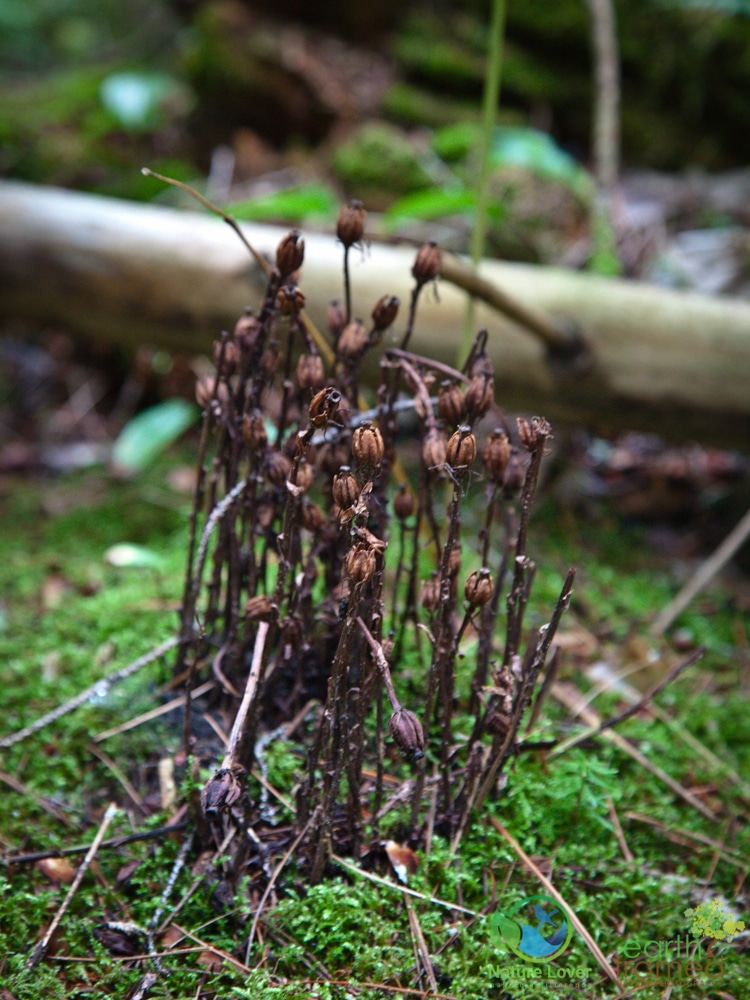
Usually white and gray, the Indian Pipe wildflower dries up and turns brown at the end of the season. They look more like a plant during this stage and less like a fungus or mushroom.
The trail wound its way through stands of pine trees and other types that can survive on sandy soils that were left during the last ice age. Hardwood trees, like maples, need soils that will capture rainwater, otherwise, as saplings, they would not survive long periods without rain.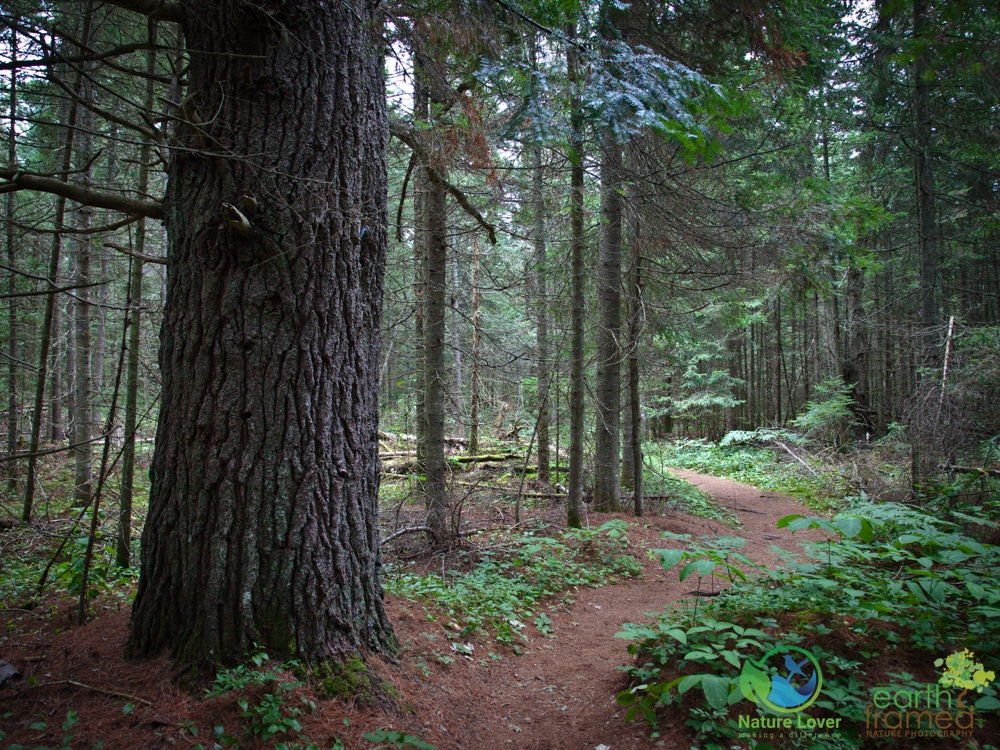
Among the younger trees we found a select number of larger, and older pine trees that survived previous generations of logging in Algonquin Park.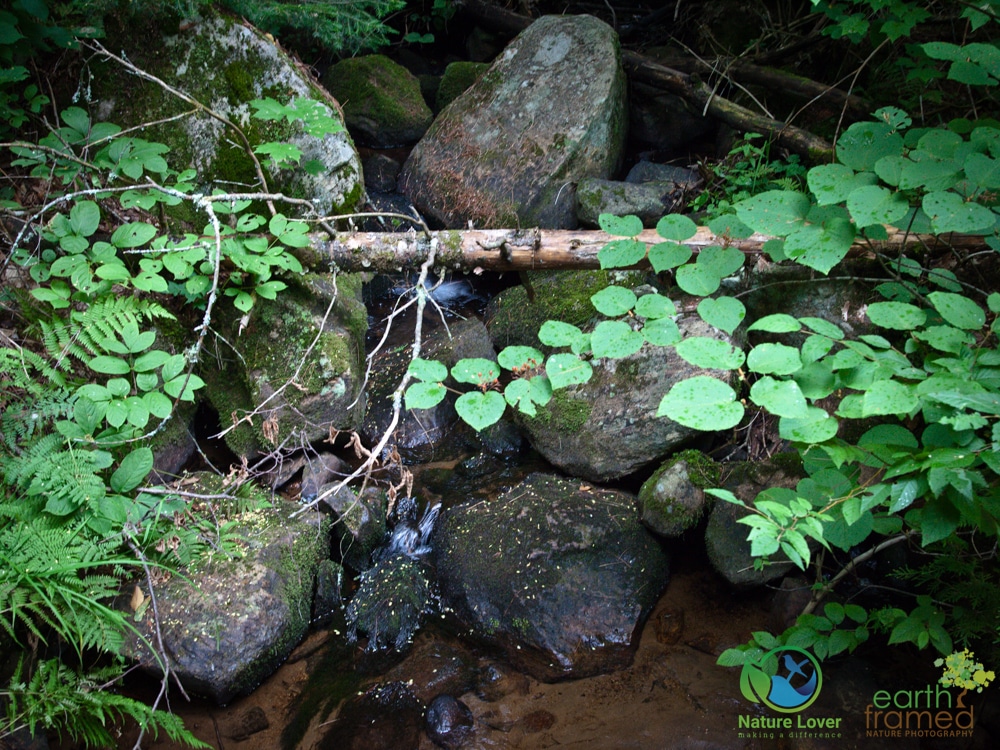
Before the rain began we crossed a small bridge with this trickling river slowly flowing beneath it. The water was much higher once we came past it again and the rain was falling heavily on the forest floor.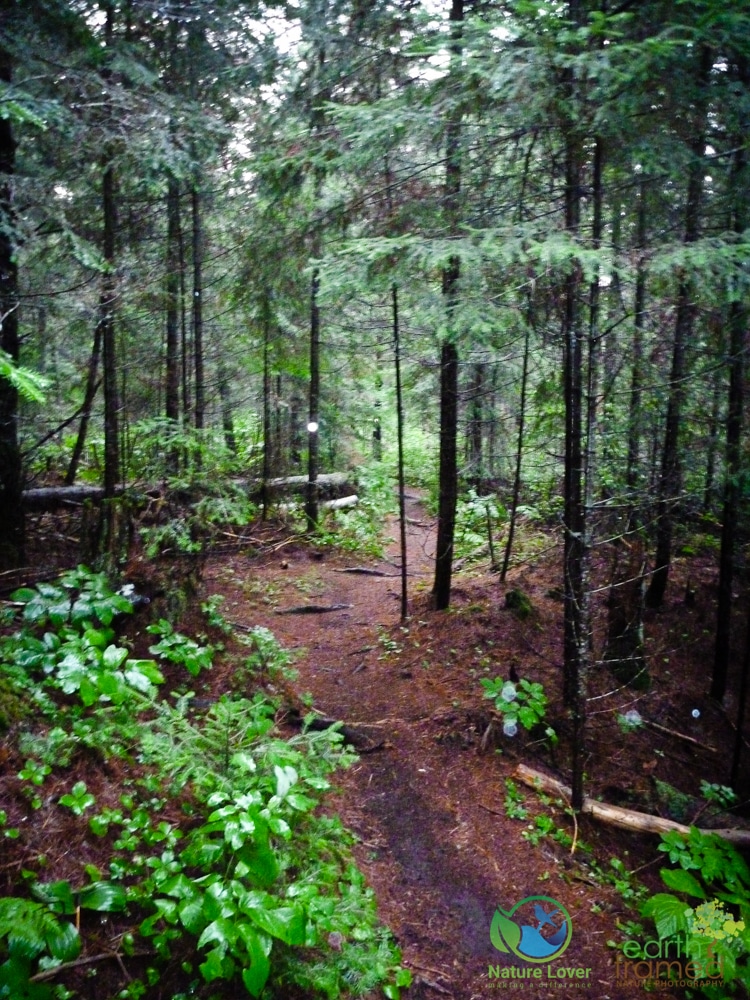
The rain started fairly abruptly while we had just traversed a sleep incline. At the top we quickly put on our rain pants and jackets before turning around to slowly make our way back to the trail head. The rain was coming down so fast and hard that the slope quickly became drenched and slippery with water starting to flow down in tiny streams. I also packed my good camera away and took out my small, waterproof point and shoot to capture a few pictures on the way back. 
Above you can probably tell the difference in not only quality but also colour. The other obvious difference between the cameras is the sensitivity to light. The point and shoot definitely needed to use a flash in order to capture an image. 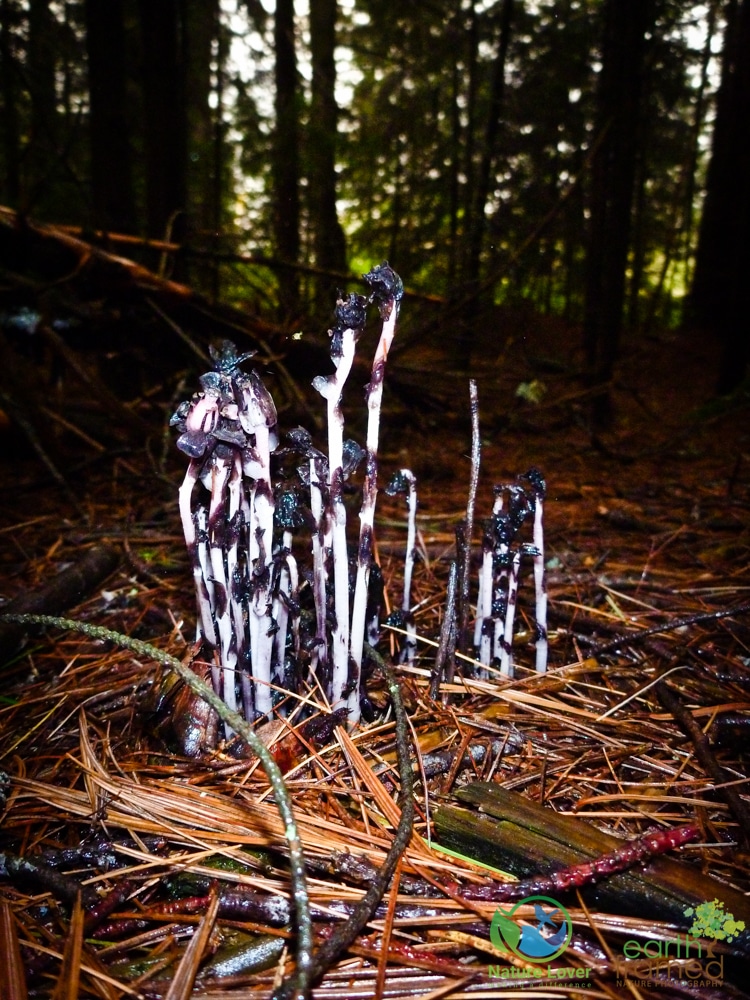
Earlier on the hike I captured some dried up Indian Pipe but a bit further down I came across this patch – quite a difference.
As we arrived back at the parking lot we looked out over the road to find a beautiful rainbow which is always a welcome sight.
Hiking in the rain isn’t a bad experience. You can experience a location in a completely different way when it is wet and when it is raining. The important this to do when hiking it to prepare for the possibility that the weather might change and to take precautions as you are hiking because wet surfaces can be difficult and dangerous, especially along ridges, slopes and rock outcroppings. Plan ahead and be cautious.


